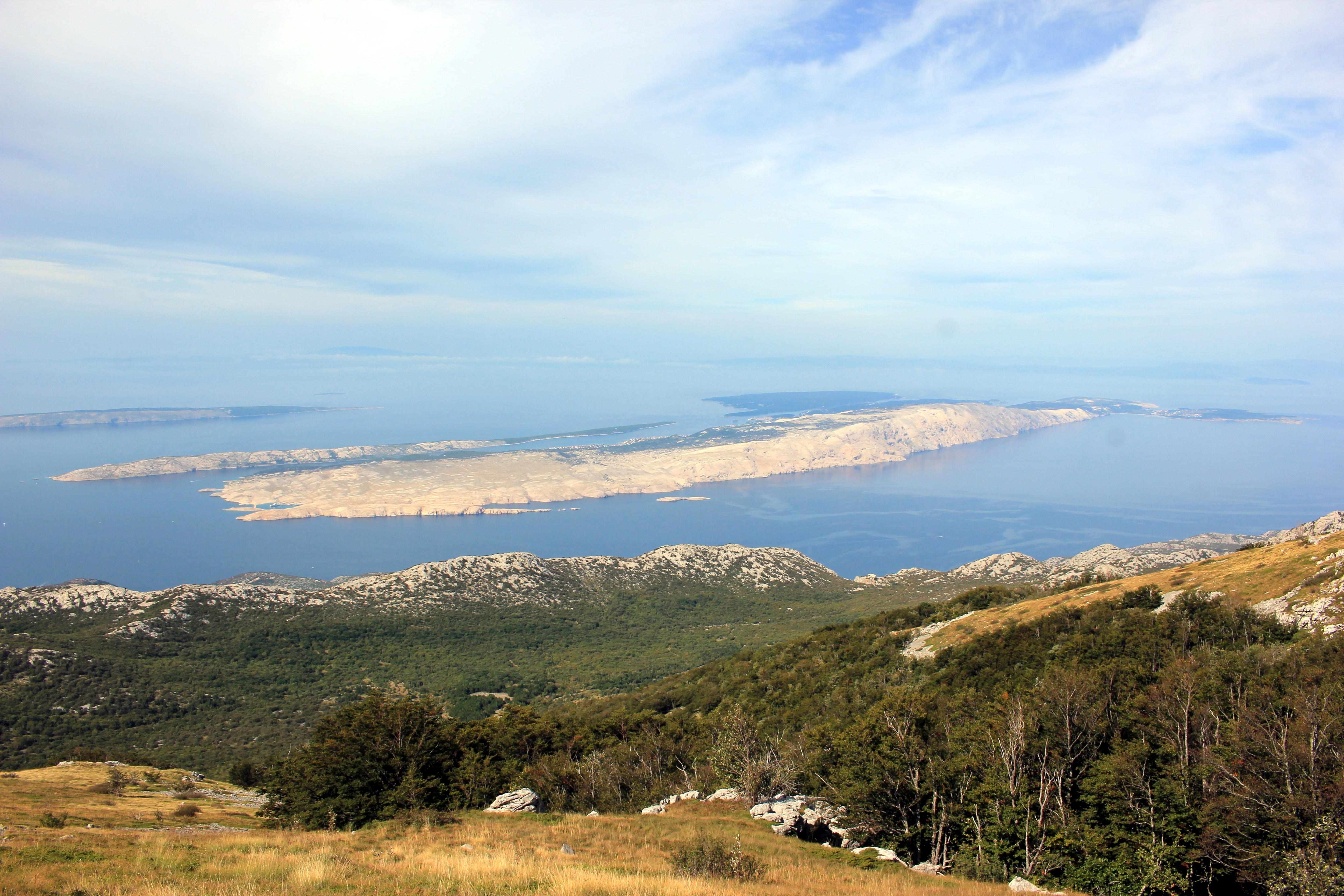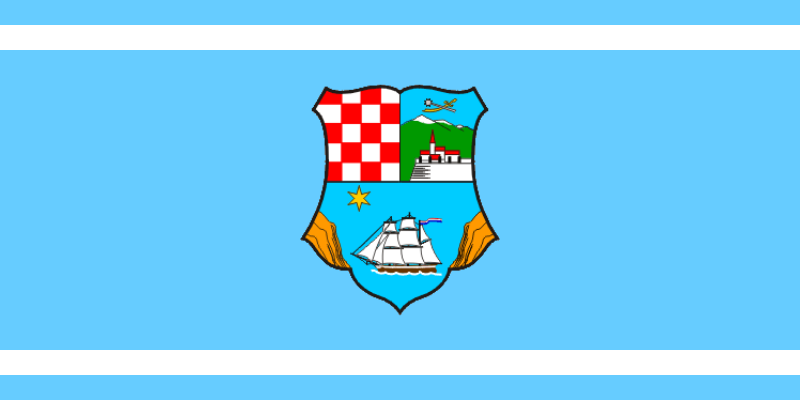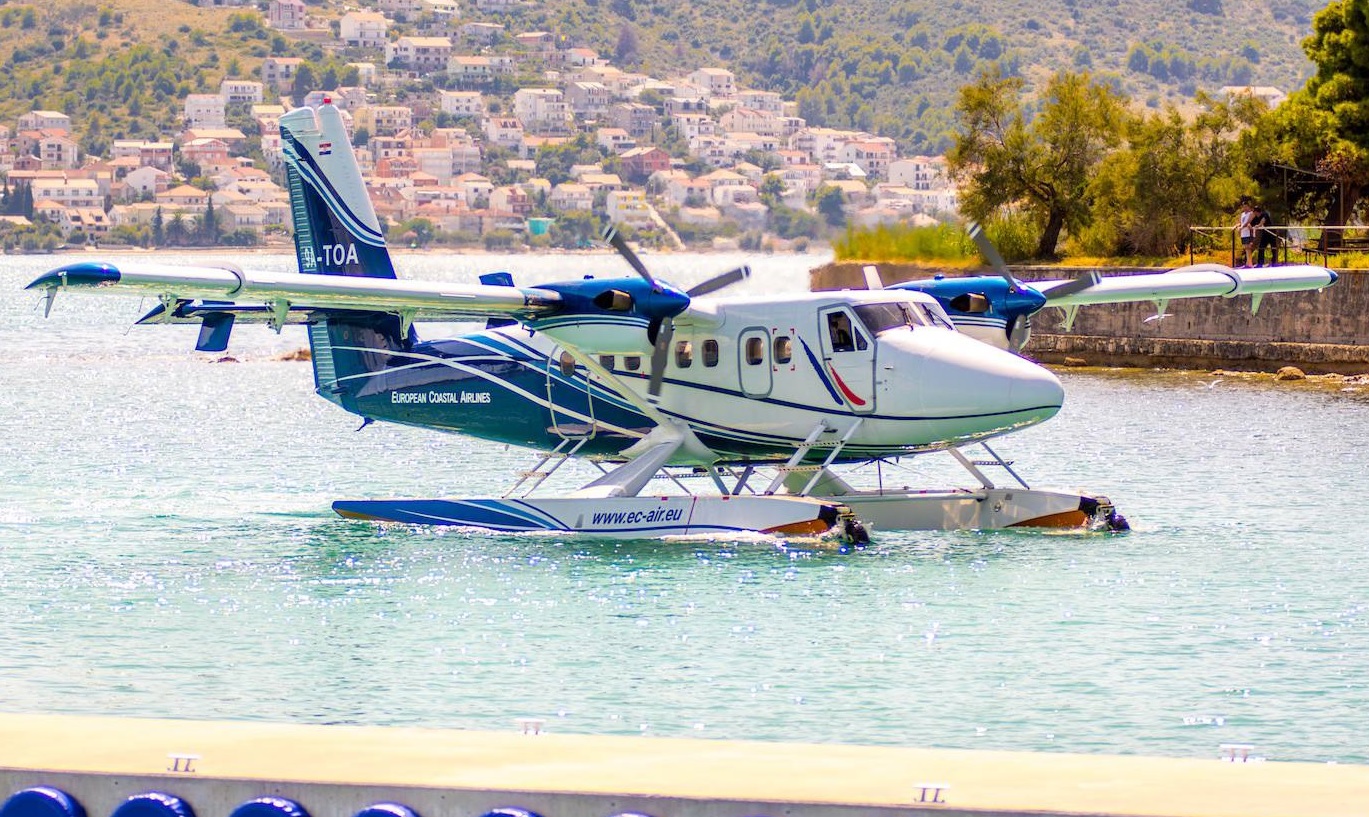|
Rab
Rab ´┐Ż├ó╦Éb( dlm, Arba, la, Arba, it, Arbe, german: Arbey) is an island in the northern Dalmatia region in Croatia, located just off the northern Croatian coast in the Adriatic Sea. The island is long, has an area of and 9,328 inhabitants (2011). The main settlement on the island is the eponymous town of Rab, although the neighboring village of Palit has the biggest population. The highest peak is Kamenjak at 408 m. The northeastern side of the island is mostly barren, karst, while the southwestern side is covered by one of the last oak forests of the Mediterranean. Ferries connect the island of Rab with the mainland port of Stinica and with the neighbouring islands of Krk and Pag. European Coastal Airlines offered multiple daily connections by seaplane from Rab to Zagreb and to Rijeka via Rijeka Airport in Omi┼íalj on the neighboring island of Krk, until it ceased operations in 2016. Name The island of Rab was first mentioned in a Greek source Periplus of Pseudo-Sc ... [...More Info...] [...Related Items...] OR: [Wikipedia] [Google] [Baidu] |
Rab (town)
Rab ( it, Arbe la, Arba) is a town (''grad'') on the island of Rab in Croatia. According to the 2011 census the total population of the town was 8,065, whereas only 437 lived in the titular settlement ( naselje). Rab, the settlement, is located on a small peninsula on the southwestern side of the island. The town has a long history that dates back to 360 BC when it was inhabited by the Illyrians. The island was the frontier between the regions of Liburnia and Dalmatia. From the third century BC to the sixth century AD Rab was part of the Roman Empire, and Emperor Augustus proclaimed it a municipium in 10 BC. It was the first town of Roman Dalmatia to be given the honorary title "felix". The worst disaster in the town's history was an outbreak of the plague in 1456 that decimated the city's population. There are many churches in the town. The largest is St. Mary the Blessed, which was built in the 13th century. The church of St. Justine is now a museum of sacred arts, while the ... [...More Info...] [...Related Items...] OR: [Wikipedia] [Google] [Baidu] |
Liburnia
Liburnia ( grc, ╬Ť╬╣╬▓╬┐¤ů¤ü╬Ż╬»╬▒) in ancient geography was the land of the Liburnians, a region along the northeastern Adriatic coast in Europe, in modern Croatia, whose borders shifted according to the extent of the Liburnian dominance at a given time between 11th and 1st century BC. Domination of the Liburnian thalassocracy in the Adriatic Sea was confirmed by several Antique writers, but the archeologists have defined a region of their material culture more precisely in northern Dalmatia, eastern Istria, and Kvarner. Classical Liburnia The Liburnian cultural group developed at the end of the Bronze Age after the Balkan-Pannonian migrations, and during the Iron Age in a region bordered by Ra┼ía, Zrmanja and Krka rivers (''Arsia'', ''Tedanius'', ''Titius''), including the nearby islands. This territory lay mostly at the coast and on the numerous islands. Its continental borders were marked by the rivers and mountains: Ra┼ía, U─Źka, Gorski Kotar, peaks of Velebit mou ... [...More Info...] [...Related Items...] OR: [Wikipedia] [Google] [Baidu] |
Primorje-Gorski Kotar County
Primorje-Gorski Kotar County ( hr, Primorsko-goranska ┼żupanija, ) is a county in western Croatia that includes the Bay of Kvarner, the surrounding Northern Croatian Littoral, and the mountainous region of Gorski kotar. Its center is Rijeka. The county's population was 296,195 at the 2011 census. The county includes the island territories of Krk, Cres, Lo┼íinj and Rab. The county is divided: * City of Rijeka (county seat) * Town of Bakar * Town of Cres * Town of Crikvenica * Town of ─îabar * Town of Delnice * Town of Kastav * Town of Kraljevica * Town of Krk (town), Krk * Town of Mali Lo┼íinj * Town of Novi Vinodolski * Town of Opatija * Town of Rab (town), Rab * Town of Vrbovsko * Municipality of Ba┼íka, Croatia, Ba┼íka * Municipality of Brod Moravice * Municipality of ─îavle * Municipality of Dobrinj * Municipality of Fu┼żine, Croatia, Fu┼żine * Municipality of Jelenje * Municipality of Klana * Municipality of Kostrena * Municipality of Lokve, Croatia, Lokve * M ... [...More Info...] [...Related Items...] OR: [Wikipedia] [Google] [Baidu] |
Croatia
, image_flag = Flag of Croatia.svg , image_coat = Coat of arms of Croatia.svg , anthem = "Lijepa naša domovino"("Our Beautiful Homeland") , image_map = , map_caption = , capital = Zagreb , coordinates = , largest_city = capital , official_languages = Croatian language, Croatian , languages_type = Writing system , languages = Latin alphabet, Latin , ethnic_groups = , ethnic_groups_year = 2021 , religion = , religion_year = 2021 , demonym = , government_type = Unitary parliamentary republic , leader_title1 = President of Croatia, President , leader_name1 = Zoran Milanović , leader_title2 = Prime Minister of Croatia, Prime Minister , leader_name2 = Andrej Plenković , leader_title3 = Speaker of the Croatian Parliament, Speaker of P ... [...More Info...] [...Related Items...] OR: [Wikipedia] [Google] [Baidu] |
European Coastal Airlines
European Coastal Airlines was a Croatian seaplane operator headquartered in Split. Founded in 2000, the company launched scheduled services in August 2014 and served domestic flights within Croatia as well as services to nearby Italy. The company slogan was ''We connect Croatia!'' The airline ceased all operations in 2016. History The company was established in September 2000, by the Croatian company Obalna Kapitalna Ulaganja d.o.o. from Zagreb, Croatia, and European SeaPlane Service (ESPS) GmbH, from Landsberied, Germany. The airline flew promotional flights using a restored vintage Grumman Goose in 2000. The ''Slobodna Dalmacija'' daily reported in August 2002 that the company had acquired licences to land at 25 destinations around the Croatian Adriatic, including the Zadar harbour. According to Croatian law, seaplane operations must obtain licences from both the local civil aviation and maritime authorities, along with concessions normally required for all businesses along ... [...More Info...] [...Related Items...] OR: [Wikipedia] [Google] [Baidu] |
Dalmatian Language
Dalmatian () or Dalmatic (; dlm, langa dalmata, link=no or simply ; it, lingua dalmatica, dalmatico; sh, dalmatski) was a Romance language that was spoken in the Dalmatia region of present-day Croatia, and as far south as Kotor in Montenegro. The name refers to a tribe of the Illyrian linguistic group, Dalmatae. The Ragusan dialect of Dalmatian, the most studied prestige dialect, was the official language of the Republic of Ragusa for much of its medieval history until it was gradually supplanted by other local languages. Dalmatian speakers lived in the coastal towns of Zadar ('), Trogir ('), Spalato ( Split; '), Ragusa ( Dubrovnik; '), and Kotor ('), each of these cities having a local dialect, and on the islands of Krk ('), Cres ('), and Rab ('). Dialects Almost every city developed its own dialect. Most of these became extinct before they were recorded, so the only trace of these ancient dialects is some words borrowed into local dialects of today's Croat ... [...More Info...] [...Related Items...] OR: [Wikipedia] [Google] [Baidu] |
Liburnians
The Liburnians or Liburni ( grc, ╬Ť╬╣╬▓¤ů¤ü╬Ż╬┐߯Â) were an ancient tribe inhabiting the district called Liburnia, a coastal region of the northeastern Adriatic between the rivers ''Arsia'' ( Ra┼ía) and ''Titius'' ( Krka) in what is now Croatia. According to Strabo's '' Geographica'' they populated Kerkyra until shortly after the Corinthians settled the island, c. 730 BC. Origins and relation to Illyrians Liburni's archaeological culture can be traced to the Late Bronze Age and "were settled since at least the tenth century BC in northern Dalmatia". Some Greek and Roman historians considered them to be of Asia Minor origin. According some scholars there existed some common characteristics between them and Etruscans, but others refute them and Asia Minor theory isn't generally accepted. Appian considered them as "one of the Illyrian peoples", an "Illyrian tribe", while Florus as the first enemies of Romans during Illyro-Roman Wars. However, although sometimes designated as ... [...More Info...] [...Related Items...] OR: [Wikipedia] [Google] [Baidu] |
Slavic Liquid Metathesis And Pleophony
The Slavic liquid metathesis refers to the phenomenon of metathesis of liquid consonants in the Common Slavic period in the South Slavic and West Slavic area. The closely related corresponding phenomenon of pleophony (also known as polnoglasie or full vocalization) occurred in parallel, in the East Slavic languages. The change acted on syllables in which the Proto-Slavic liquid consonants *''r'' and *''l'' occurred in a coda position. The result of the change is dependent upon the phonological environment and accents, and it varies in different Slavic languages. The change has been dated to the second half of the 8th century, before any Slavic languages were recorded in writing. Therefore, the change itself cannot be observed, but it can be inferred by comparing words in different Slavic languages. Evidence of the earlier state of affairs is also preserved in loanwords into and from Early Slavic as well as in cognates in other Indo-European languages, particularly Baltic langu ... [...More Info...] [...Related Items...] OR: [Wikipedia] [Google] [Baidu] |





